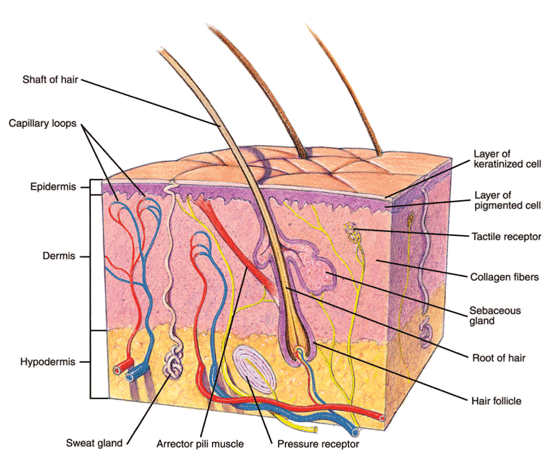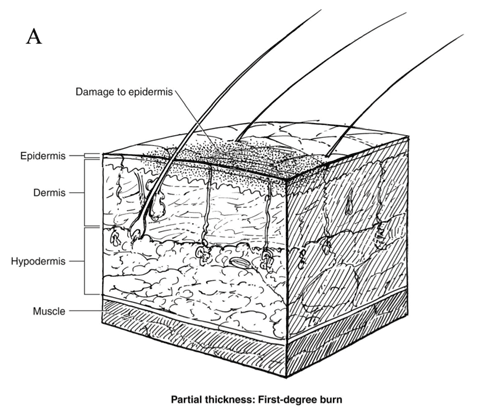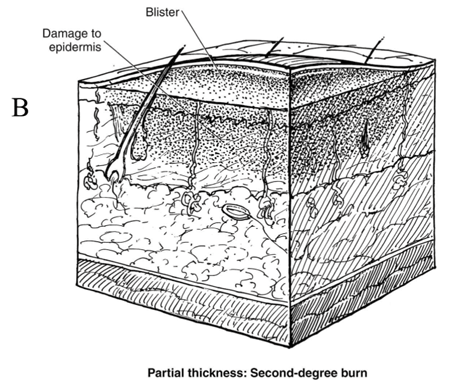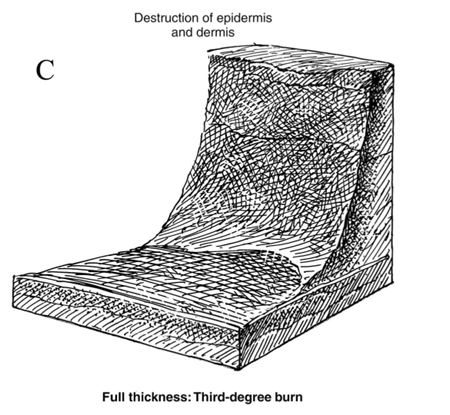Soft Tissue Injuries / Burns
Can I Get Social Security Disability Benefits for Soft Tissue Injuries / Burns?
- How Does the Social Security Administration Decide if I Quality for Disability Benefits for Soft Tissues Injuries / Burns?
- About Soft Tissue Injuries / Burns and Disability
- Winning Social Security Disability Benefits for Soft Tissue Injuries / Burns by Meeting a Listing
- Residual Functional Capacity Assessment for Soft Tissue Injuries / Burns
- Getting Your Doctor’s Medical Opinion About What You Can Still Do
How Does the Social Security Administration Decide if I Qualify for Disability Benefits for Soft Tissue Injuries / Burns?
If you have soft tissue injuries / burns, Social Security disability benefits may be available. To determine whether you are disabled by soft tissue injuries / burns, the Social Security Administration first considers whether your soft tissue injuries are severe enough to meet or equal a listing at Step 3 of the Sequential Evaluation Process. See Winning Social Security Disability Benefits for Soft Tissue Injuries by Meeting a Listing.
If your soft tissue injury / burn is not severe enough to equal or meet a listing, the Social Security Administration must assess your residual functional capacity (RFC) (the work you can still do, despite your soft tissue injuries), to determine whether you qualify for benefits at Step 4 and Step 5 of the Sequential Evaluation Process. See Residual Functional Capacity Assessment for Soft Tissue Injuries.
About Soft Tissue Injuries / Burns and Disability
What Is a Soft Tissue Injury?
The Social Security Administration allows a disability for soft tissue injury (e.g., burns) of an upper or lower extremity, trunk, or face and head.
Examples of soft tissue injuries include nerve injuries, injuries to tendons and ligaments, injuries to arteries and veins, injuries to the lymphatic system, injuries to muscle, and injuries to skin.
The most likely accidents to produce these types of injuries are automobile, motorcycle, and work-related accidents.
In some cases, surgery may be required to restore function to a limb, such as vascular repair, re-attachment of ligaments and tendons, as well as nerve, vascular, and tendon grafts.
Severe burns are particularly likely to require extensive and prolonged reconstructive surgery to deal with scarring after the burn injury itself has healed.
Degrees of Burning
The various degrees of burning injury are as follows (see Figures 1 – 4 below):
- First degree: the injury is limited to the outer layer of skin (epidermis).
- Superficial second degree: there is injury to both the outer layer of skin (epidermis) and the outer layer of the dermis (living skin layer beneath the epidermis).
- Deep second degree: There is injury through the epidermis and deep into the dermis.
- Third degree: There is full-thickness injury through the epidermis and dermis into the fat layer beneath the skin (subcutaneous fat).
- Fourth degree: there is injury through the skin and subcutaneous fat into underlying muscle or bone.

Figure 1: Features of normal human skin.

Figure 2: A first-degree burn.

Figure 3: A second-degree burn.

Figure 4: A third-degree burn.
How Are Burns Evaluated?
Electrical, chemical, or thermal burns frequently affect other body systems (e.g., musculoskeletal, special senses and speech, respiratory, cardiovascular, renal, neurological, or mental).
Therefore, the Social Security Administration evaluates burns the way it evaluates other disorders that can affect the skin and other body systems. That is, it uses the listing for the predominant feature of your impairment.
For example, if your soft tissue injuries are under continuing surgical management, then your impairment is evaluated under the 1.08 listing for soft tissue injuries. However, if your burns do not meet the requirements of listing 1.08 and you have extensive skin lesions that result in a very serious limitation that has lasted or can be expected to last for a continuous period of at least 12 months, the Social Security Administration will evaluate them under a different listing (listing 8.08).
When to Determine the Claim
If you have extensive second or third degree burns to the hands, elbows, or knees that have just begun treatment at the time of application for benefits, the Social Security Administration should not guess that full function will be restored. Rather, the claim should be held for some months until a realistic assessment of probable outcome can be determined. By then, the long-term surgical management plan will have acquired more definite form.
Winning Social Security Disability Benefits for Soft Tissue Injuries by Meeting a Listing
To determine whether you are disabled at Step 3 of the Sequential Evaluation Process, the Social Security Administration will consider whether your burn injuries are severe enough to meet or equal a listing. The Social Security Administration has developed rules called Listing of Impairments for most common impairments. The listing for a particular impairment describes a degree of severity that Social Security Administration presumes would prevent a person from performing substantial work. If your burn injuries are severe enough to meet or equal the listing, you will be considered disabled.
Listing 1.08
The Social Security Administration listing for soft tissue injury is 1.08. That listing applies to soft tissue injury (e.g., burns) of an upper or lower extremity, trunk, or face and head that is under continuing surgical management for the purpose of the salvage or restoration of major function, but the major function was not restored or is not expected to be restored within 12 months.
Meeting Listing 1.08 for Soft Tissue Injuries
This listing applies only to people who are under the ongoing care of a surgeon who is treating extensive soft tissue injuries. If you have soft tissue injuries that are not healed, but you are not under the continuing care of a surgeon, then you cannot qualify under this listing.
To qualify for a disability under this listing, the Social Security Administration must be able to obtain medical evidence showing a definite treatment plan by the surgeon. Vague statements by the surgeon involving possibilities for further surgery, or that you “will be disabled for 12 months” are not sufficient.
The phrase “under continuing surgical management” in the listing means that you are undergoing surgical procedures and any other associated treatments for the purpose of salvaging or restoring the functional use of the affected part. The treatment may include such things as post-surgical procedures, surgical complications, infections, or other medical complications, related illnesses, or related treatments that delay the individual’s attainment of maximum benefit from therapy.
The listing requires that a “major function” is not able to be restored due to a soft tissue injury of the upper or lower extremity, trunk or face.
A major function of the face and head means activities involving vision, hearing, speech, mastication (chewing), and the initiation of the digestive process.
After maximum benefit from therapy has been achieved (i.e., there have been no significant changes in physical findings or on appropriate medically acceptable imaging for any 6-month period after the last definitive surgical procedure or other medical intervention), you are evaluated on the basis of your residual limitation.
A finding that the listing is met must be based on a consideration of the symptoms, signs, and laboratory findings associated with recent or anticipated surgical procedures and the resulting recuperative periods, including any related medical complications, such as infections, illnesses, and therapies that impede or delay the efforts toward restoration of function.
Continue to Residual Functional Capacity Assessment for Soft Tissue Injuries.
